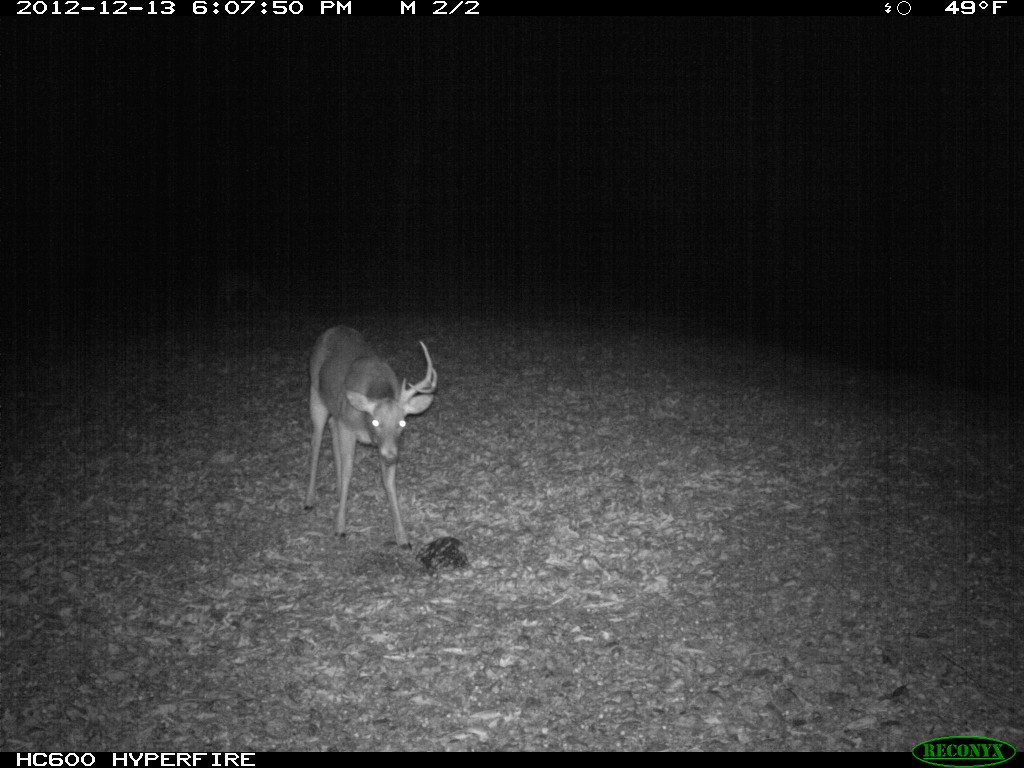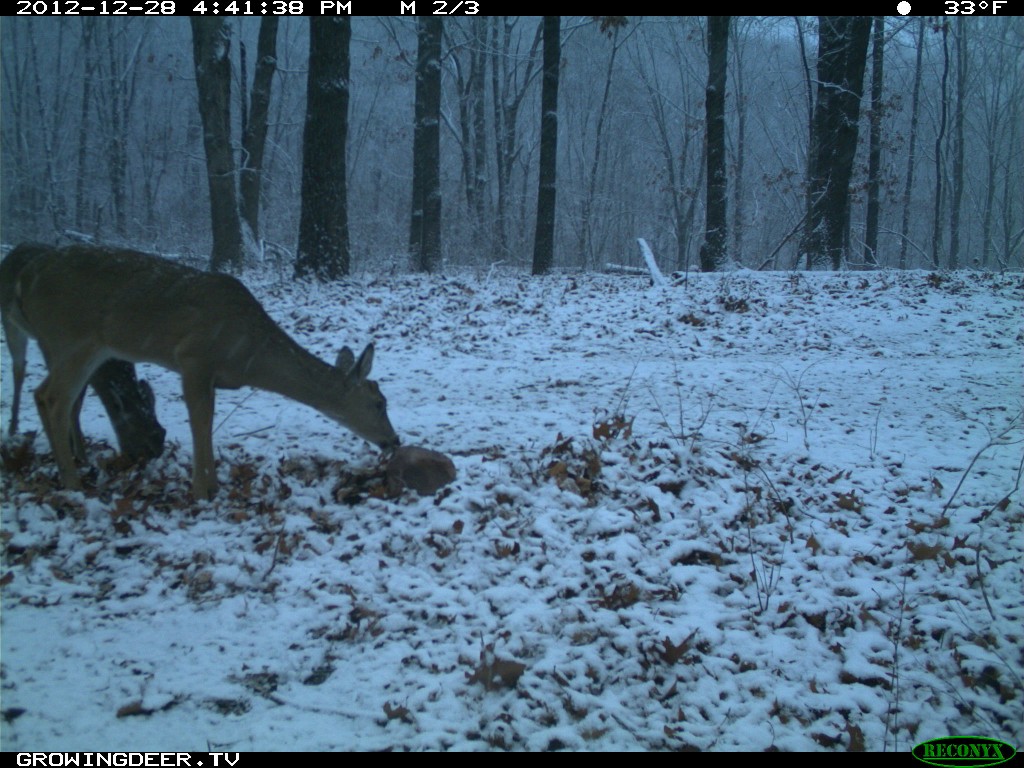Why Bucks Are Shedding Antlers Early
Filed under: Deer Management, Hunting Blog, Trail Cameras, White-tailed Deer
Throughout the whitetails range I am receiving reports and photos of bucks that are already shedding their antlers. Since early December 2012 I’ve gotten several Reconyx trail camera pictures of bucks that have already shed one or both antlers here at The Proving Grounds. It’s common for an occasional buck to shed early due to injury. However, I suspect about 10%+ of the bucks at my place have already shed.

Since early December 2012 I’ve gotten several Reconyx pictures of bucks that have already shed one or both antlers.
Early shedding is a sign of stress. I’m sure deer at my place are stressed. During the 2011 growing season we experienced an extended drought followed by a record drought (the driest July during 118 years of record keeping) during 2012. Plants can’t transfer nutrients without water. Therefore forage quality was most likely severely decreased during the past two years.

During the past two years the deer at my place experienced extended drought and a major outbreak of EHD.
There was also a major outbreak of EHD at my place (as in many places from Florida to Wyoming) last fall. There are two forms of EHD, acute and chronic. Deer with the acute form of EHD usually die within 24 to 36 hours. Deer with the chronic form may or may not die. If they do die, it often takes months.
We’ve found bucks that probably died from both forms of EHD (GDTV 147). The good news is that Mrs. Tracy will likely find a lot of sheds this year! The bad news is that she will also find a lot of skulls of bucks that died before they shed their antlers. I’ll keep you posted as Tracy and Crystal begin shed hunting. They will start just as soon as the archery season closes in Missouri (January 15, 2012).
I’ll begin a supplemental feeding program using the high quality feeds from Record Rack. I’ve never used supplemental feed before at The Proving Grounds. However, given the drought and amount of stress the herd is experiencing at my place, I think supplemental feeding is a very smart management strategy. I’ll keep you posted on our feeding program through this blog, on my Facebook page, and on GrowingDeer.tv!
If you’ve never used supplemental feed before, stay tuned and I’ll show you how and why I opted to use this strategy from a biologist’s point of view.
Growing Deer together,
Grant Woods, Ph.D.
Wildlife Biologist



